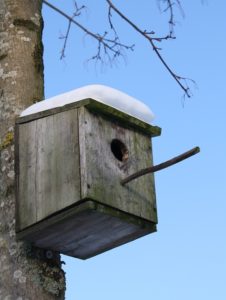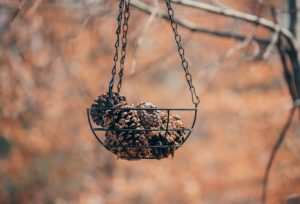 Winter can be tough on birds, squirrels, and other small critters. By providing a safe haven for these creatures, you can help ensure that they make it through the winter unscathed. To help protect the wildlife in your community, why not create a winter habitat in your backyard? It’s not too hard to make your yard a better place for animals during the cold months.
Winter can be tough on birds, squirrels, and other small critters. By providing a safe haven for these creatures, you can help ensure that they make it through the winter unscathed. To help protect the wildlife in your community, why not create a winter habitat in your backyard? It’s not too hard to make your yard a better place for animals during the cold months.
Hang Nesting Boxes
Nest boxes hung from a tree or attached to a post in your backyard can perform double duty. These boxes can be used for nesting during the breeding season, and afterward, they can provide birds with shelter from the wind and rain. If you live in a climate that’s particularly cold, you may want to consider modifying your birdhouse to make it better for roosting. Add twigs for perching, and plug some of the ventilation holes to keep cool winds out.
Don’t Deadhead Your Plants
During the growing season, most types of perennials and annuals will continue to grow if they are regularly deadheaded. The term “deadhead” refers to the removal of dead flowers from plants as a way to improve the plant’s appearance and growth. But during the winter, you want to avoid deadheading your plants. When you leave your flowering plants untrimmed, birds will be able to consume the stalks and seeds. In addition, plants with uncut foliage can help provide small critters with camouflage from predators.
Add Layers of Plants and Shrubs for Protection
You’ve provided winter protection for your outdoor furniture with table and chair covers. Now, find ways to provide protection against the elements for the wildlife in your backyard. Plants and shrubs can be effective tools to protect wildlife from chilly temperatures in the cooler months. Evergreen trees and shrubs make excellent shelters for small animals, as they block cold winds. Shrubby thickets of chokecherry and dogwood also provide winter protection and nesting sites as well as a food source for some species.
Plant Food for Foraging Critters
When food becomes scarce in the winter, have food sources for the creatures that reside in your backyard. A number of plants are able to survive cooler temperatures and act as a food source for wildlife. Blackberry, holly, elderberry, rose, sumac, mulberry, and crab apple are a few examples. These types of plants grow in the fall and are ready in the winter for wildlife to enjoy. You can also make some food sources. Pine cone feeders are easy to make and can be hung on trees for birds and squirrels to feast on. This can be a fun project for the entire family.
Provide Water Sources
Fresh water can be hard to come by in the winter, and animals can’t often survive on snow and ice alone. Provide wildlife with fresh water in the form of a bird bath, small pond, or similar water source. You can prevent these water sources from freezing by installing an inexpensive water heater. To prevent small critters from falling in and drowning, place stones or other sturdy items in the water to provide platforms that animals can use to get to the water safely.
